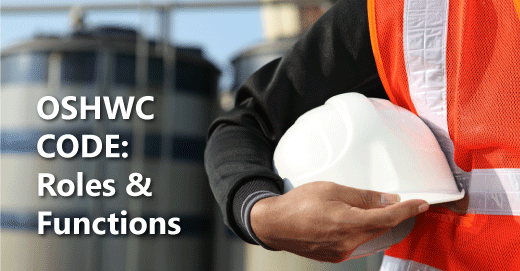
Introduction
The efficacy of any legal framework is dependent on enforcement as a matter of basic jurisprudence and the same holds true for India’s latest labour reforms. Under the OSHWC Code the inspector-cum-facilitator is the primary authority responsible for inspection and thus enforcement. While there is a great deal of speculation surrounding how the provisions of the labour codes will affect workers, employers, and the ease of being compliant, it is important to understand the enforcement mechanism under the Codes.
One of the major drawbacks of our existing regulatory framework pertaining to labour was its reliance on inspectors and its eventual descent into an Inspector Raj. However, the rhetoric surrounding the abolition of the so-called Inspector Raj should not divert attention from the changes to the regulatory system being brought in. It is indisputable that the current system of inspection was affected by rent-seeking behavior as well as unscrupulous activities from employers. However the question that must be raised at this point is whether the system replacing the above is more efficient?
To answer this satisfactorily we must first understand the role, functions, and powers of an inspector-cum-facilitator.
Who is an Inspector-Cum-Facilitator?
The definition clause merely states that an inspector-cum-facilitator means one appointed under sub-section (1) of Section-34 under the OSHWC Code. This sub-section provides that the appropriate Government may, by notification, appoint inspector-cum-facilitators who shall exercise the powers conferred on them throughout their respective jurisdictions. Section-34(5) also empowers the appropriate Government to appoint a Chief Inspector-cum-Facilitator for a State or more than one State as well as for the whole country.
No person appointed as an inspector-cum-facilitator shall be permitted to continue to hold office, or continue to pursue any direct or indirect interest in a workplace or work activity, or continue to be involved in any process or business carried on in any workplace or in any plant or machinery connected therewith. Every Chief Inspector-cum-Facilitator, Additional Chief Inspector-cum-Facilitator, Joint Chief Inspector-cum-Facilitator, Deputy Chief Inspector-cum-Facilitator, Inspector-cum-Facilitator and every other officer appointed under Section-34 of the OSHWC Code shall be deemed to be a public servant under Section-21 of the Indian Penal Code.
Powers of Inspector-cum-Facilitator
Under Section-35 of the OSHWC Code, 2020 an Inspector-cum-Facilitator is empowered to enter workplaces, inspect establishments and their machinery, inquire into any accidents or dangerous occurrences, require production of any register or any other document relating to the workplace, search or seize or take copies of any register, record or other document, direct the occupier/employer to leave any premises or part thereof undisturbed for the purpose of inspection, take samples of any substances and issue show cause notices relating to safety, health and welfare violations under the OSHWC Code and its rules.
The Inspector-cum-Facilitator is also empowered to prosecute, conduct, and defend before any court any complaint or other proceeding arising under the Code and the rules thereunder. Additionally, the Inspector-cum-Facilitator has an added responsibility to supply information and sensitize employers as well as workers in relation to the provisions of the Code and compliance with them.
Section-38 of the OSHWC Code also vests special powers in the Inspector-cum-Facilitator with respect to factories, mines, dock work as well as building and construction work. These include the power to issue orders in writing with regards to serious hazards and imminent danger, removal of such danger, prohibition of employment of persons etc. Section-40 of the Code mandates that every employer of an establishment must allow the Chief Inspector-cum-Facilitator, and every Inspector-cum-Facilitator or every person authorized by the Chief Inspector-cum-Facilitator, all reasonable facilities for making any entry, inspection, survey, measurement, examination or inquiry under the Code.
What is the change in framework?
To understand the change in framework vis-à-vis the current scheme of labour inspection in India, we must first understand the distinct role of an Inspector-cum-Facilitator. This is made clear when we refer to Section-34(3)(i) of the OSHWC Code, which states that for the purposes of inspection, the appropriate Government may lay down a scheme that provides for the generation of web-based inspection and calling of information electronically. There is also mention of a randomized selection of establishment for inspection by the Inspector-cum-Facilitator. Thus, we see the removal of total control that an inspector previously had over inspection proceedings. In the sense that the use of electronic records allows for a more transparent procedure as the physical aspect of inspection is displaced for an electronically operated module that, when coupled with randomized selection and online inspection of uploaded documents creates a more streamlined process.
This is why Section-34(4) mentions the factors that must be considered while formulating the scheme of web-based inspection as follows:-
a) Assignment of a unique number to each establishment which will be the same as the registration number allotted to an establishment during registration under Section-3 of the Code. A similar unique number shall be given to the Inspector-cum-Facilitator and to each inspection in a manner to be notified
b) Timely uploading of inspection reports
c) Provisions for special inspections
d) The characteristics of employment, the nature of work and the characteristics of workplaces based on parameters as may be notified
In addition to the above, there is the scheme for Third Party Audit and Certification under Section-37 of the OSHWC Code that shall supplement the above framework of web-based certification and seek to lighten the regulatory load placed on Inspector-cum-Facilitators. This is because the ILO’s Labour Inspection Convention, 1947 read with its Protocol of 1995 require a labour inspector to working population ratio of 1:40,000 which is very difficult to meet in India owing to its vast population and lack of accurate statistics on the workforce.
Conclusion
While the above reforms have been hailed by employers as a massive shift from the erstwhile regulatory framework, their implementation and subsequent efficacy from an enforcement perspective will be the true test of their utility. Using a web-based inspection scheme means that the appropriate Government would have to ensure that the records uploaded by employers are immune to security breaches and technical glitches. Similarly, the module must be designed in a way to prevent any potential collusion between the employer and the inspector. The appointment of Inspector-cum-Facilitators must be done in a manner where one cannot easily ascertain the identity of the person carrying out inspection.
It is only with the above safeguards in place can such a scheme be operational as well as fruitful. What are your views on the role of the Inspector-cum-Facilitator? Is the introduction of web-based inspection practically feasible? Are there any changes that can make this scheme more efficient?
Drop your thoughts in the comments below.
| Disclaimer: This blog is meant for informational purposes and discussion only. It contains only general information about legal matters. The information provided is not legal advice and should not be acted upon without seeking proper legal advice from a practicing attorney. Simpliance makes no representations or warranties in relation to the information on this article. |



nice analysis
Over all its good, but the conclusion misses the very point of safe data transmission. As for the conclusiong that the appointment of Inspector-cum-Facilitators must be done in a manner where one cannot easily ascertain the identity of the person carrying out inspection, how does an employer part with information to a person requiring such information if the identity is now known!
Actual problem of the bill is, it says lot about inspection but in reallity situation of inspecting department is pathetic. Neither government provides any resources to inspectors to carry out inspections nor factory owners listen to this department. In many states inspectors do not have vehicle to cover there juridiction , neither they have office buildings or even staff to work.
The present bill have bot addressed the basic issue that if inspecting authorities are not even provided resources, how will they manage to work efficiently?
Wow, that’s what I was searching for, what a material! existing here at this
weblog, thanks admin of this web page.
Why visitors still use to read news papers when in this technological world the whole thing is presented on net?
Hi there, always i used to check web site posts here in the early hours in the break
of day, because i enjoy to learn more and more.